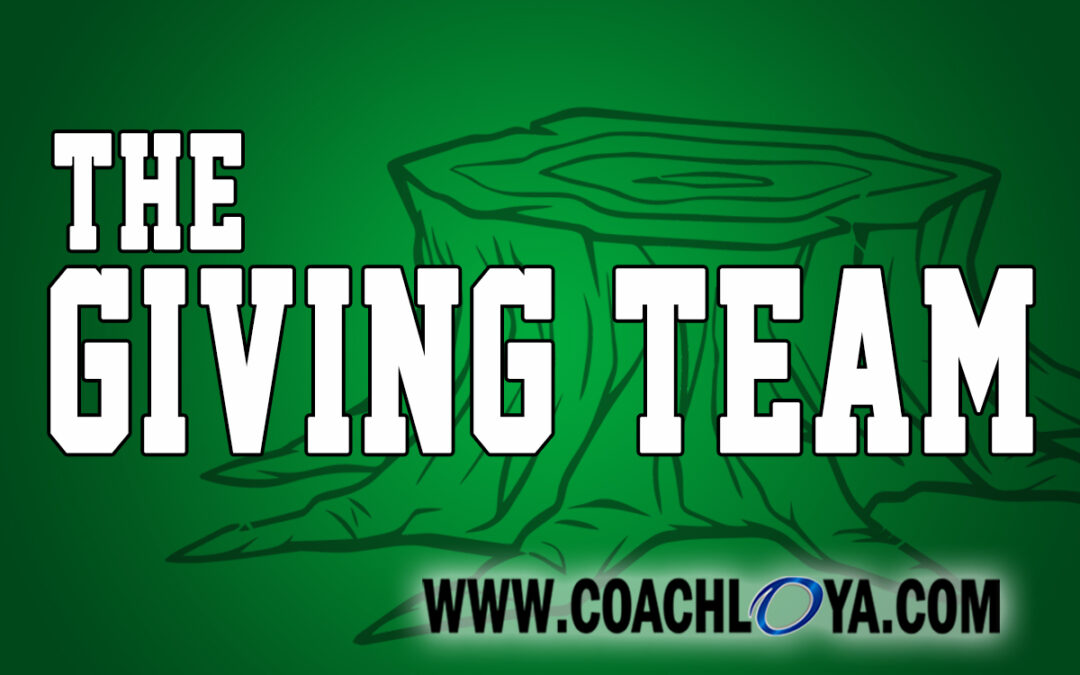Sixty years ago this month, Harper & Row (HarperCollins) published the beloved children’s book The Giving Tree. When I think of books that illustrate important aspects of being a good teammate, this is a book that comes to mind.
Written and illustrated by Shel Silverstein, The Giving Tree is a moving story about the relationship between a boy and a tree. When the boy is young, he likes to play daily in the tree, gather her apples, and sleep in her shade, which makes the tree “happy.”
As the boy grows older, he stays away for longer periods. One day, he returns but tells the tree that he is “too big” to climb and play. He wants instead to “buy things.” The tree has no money to give the boy, but suggests he take her apples and sell them to earn money to have fun.
The boy does so, which, again, makes the tree “happy.”
Following another extended absence, the boy returns. The tree invites him to climb her trunk and swing from her branches. But the boy insists he is “too busy” to climb trees. He wants a wife, children, and a house. The tree allows the boy to cut off her branches and use them to build a house so that he will be happy.
The boy does so, which, again, makes the tree “happy.”
After a long time, the boy returns, telling the tree he is “too old and sad” to play. He wants a boat so that he can sail away. The tree tells him that she has no boat, but that he can cut down her trunk and use it to build one.
The boy does so, which, again, makes the tree “happy.”
The story ends with the boy, who is now an old man, visiting the tree, who is now an “old stump” with nothing left to give. He tells her that all he needs is a quiet place to sit and rest.
The tree straightens and offers what is left of her. The boy sits on her stump, which makes the tree “happy.”
The Giving Tree highlights two crucial elements of being a good teammate: The willingness to selflessly give and the willingness to graciously accept.
Silverstein’s book has become controversial over the years. It has appeared on several banned book lists because some critics interpret the nature of the relationship to be predatory and one-sided. The tree gives without ever getting.
In an interview with The New Yorker, William Cole, who rejected Silverstein’s manuscript when he was an editor at Simon & Schuster said, “My interpretation is that that was one dum-dum of a tree, giving everything and expecting nothing in return.”
I find this to be a narrow-minded interpretation that doesn’t account for the premise that some people, including myself, experience happiness by helping others experience happiness. (*Read Measureless Mudita)
No toy, meal, vacation, or any other materialistic indulgence has ever made me as happy as helping someone in need. I enjoy helping others. I suspect the Tree would echo my sentiments.
Is it not conceivable for the boy, especially as he ages, to be aware of the tree’s fondness for helping? Sometimes being a good teammate means allowing others to experience happiness by accepting their generosity with grace and gratitude.
Imagine how successful a team could be if both elements—the willingness to selflessly give and the willingness to graciously accept—were embraced by every team member. That team would truly be a giving team, positioned for success.
And like the tree, their leader would be happy.
As always…Good teammates care. Good teammates share. Good teammates listen. Go be a good teammate.





